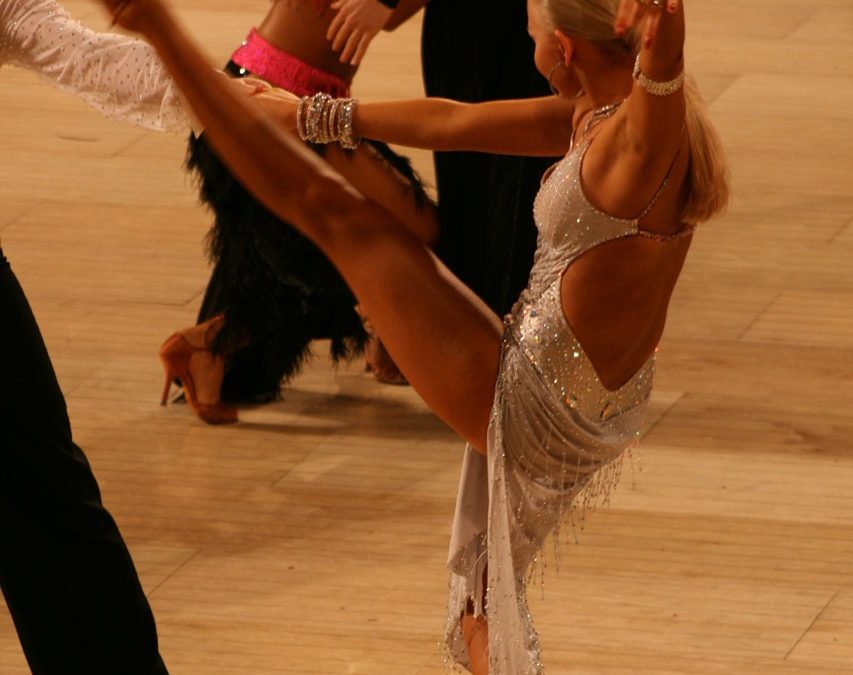
by PT-clc | Dec 19, 2017 | Celebrating, Change, Creative Living
December is a great month to reflect on your achievements from the current year and to set intentions for the coming year. According to William Bridges[1] (based on 30 years of research), in order to move successfully from one life transition to another, it is important to let go of any negative emotions associated with it, to celebrate the positive aspects and lessons learned from it… and to get clear on your vision for a new relationship, career, business … . The end of a year may be considered the ending of a transition and the start of a new year, a new beginning.
A process that I’ve found to be extremely useful for myself, and my clients is to answer the following questions and journal about them at the end of a year and before starting a new one.
Reflections:
What are the achievements I am most proud of in 2017?
What am I most grateful for this year?
What lessons have I learned regarding relationships, work experience, my own blind spots … over the past year?
Intentions:
What are my intentions for 2018 (in five areas)?
- Personal life – i.e. What my personal life looks and feels like. Note that it is important to write your intentions in the present tense as if you have already accomplished them. For example; “I am strongly connected to myself, my gifts, my fears, my strengths. I courageously uncover any and all fears, doubts and limiting beliefs that are holding me back from standing in my true power and fulfilling my larger vision and mission … .”
- Related to my Health – i.e. What my health looks and feels like. “I feel great! My body is toned, strong and flexible. I radiate health and vitality – physically, emotionally, socially and spiritually. I do yoga 3 to 4 times/week, meditate daily and spend regular time in nature hiking, kayaking, swimming, cycling …
- Financial – i,e. What my financial life looks and feels like. “ I average $_______ thousand a month in terms of income generation through Creative Life Coaching. I feel financially free and serene. I pay off my credit cards every month and my line of credit is paid off. …
- Spiritual – i.e. What my spiritual life looks and feels like. “I continue to meditate daily and deepen my ability to go within and connect with the Universal wisdom. I continue to strengthen and listen to my body’s wisdom. … “
- Intellectual – i.e. What my intellectual life looks and feels like. “I am flexible, flowing and open to new ideas. I connect with my creativity easily and effortlessly. … I blog regularly and articles come to me easily. I design and facilitate workshops and retreats that many women connect with and learn from.”
I encourage you to experiment with the process above. Feel free to change the titles of the 5 areas suggested to ones that resonate for you. Reviewing your intentions quarterly and noting how you’re doing in relation to them, helps keep them top of mind and provides encouragement to move forward. Using your intentions as a “touch stone” at the end of each year to review your achievements is helpful.
Celebrating your accomplishments feels so good and is important to provide you with the energy and commitment to move forward and fulfill your intentions.
Best of luck reflecting on 2017 and setting bold intentions for 2018. To your health, happiness, fulfillment and inner peace!
I invite you to try out the process and welcome your comments below. Feel free to share this post.
[1] Bridges, William. Transitions – Making Sense of Life’s Changes. Cambridge: De Capo Press, 2004.

by PT-clc | Dec 13, 2017 | Change, Creative Living, Leadership, Life Transitions, Women in Business
In order to let go of beliefs and behaviors that are no longer serving us and to embrace change, whether it be a change we initiate or one that is imposed on us, the Art of Change Framework is a proven model to help you understand change and how you respond to it, and to support you to move forward in your life. It is also helpful for leaders and changemakers so they can be more effective with the individuals, organizations and communities they serve.
In a previous post I outlined this 5-step process for embracing change while at the same time making a positive impact in the world – https://pamela-thompson.com/strengthen-impact-world-dance-change/. In this post we will explore Step 4 in the Art of Change Framework entitled Practice, Practice, Practice! As with learning a dance or integrating any new behavior into your life, it is crucial to practice, practice, practice, so that over time that belief or behavior becomes a habit and more unconscious than conscious.
So what are the key elements of Step 4 in the Art of Change Framework? Step 4 encompasses doing the work that includes: letting go, identifying lessons learned, envisioning the work, relationship, home of your dreams, taking action toward the dream and believing that change is a creative process that opens us up to new possibilities. If we hold that belief it is much easier to embrace change, than if we fear change and resist it.
To illustrate Step 4 in the Art of Change Framework, I’ll walk you through an example from my own life. When my husband was headhunted about 1.5 years ago it came “out of the blue”. We were living in our dream home, with a lake view and able to walk to three wineries from our home. We thought that we would be there forever. The Universe had other plans. My husband was given an offer he couldn’t refuse and asked to begin work 2 weeks after the offer was presented. I felt like the “rug had been pulled out from underneath me”. He moved to the new city, rented a small apartment and began working. I visited him several times, he came home and then I decided to try living in the new place for part of the summer. I rented our home and “dipped my toe in” for 6 weeks. During that time I realized that the new city was beautiful and Alan was enjoying his work, so we made the decision to put our house on the market. It sold quite quickly and before I knew it we had downsized from a 5-bedroom home to a 2-bedroom apartment (The Ending Phase). The first 6 months were challenging (The Neutral Zone). I so missed my friends and the life I had in the Okanagan Valley. For awhile we were surrounded by boxes, trying to decide what would fit into our new place and what to give away or put back in our storage unit. I was upset with the lack of cleanliness of parts of the apartment building we were renting. I looked at other apartments and finally realized that the location and benefits of the place we were in outweighed the cost of moving to yet another apartment. Little by little I started to meet new people, joined several Newcomers Clubs, found a great yoga studio and we began exploring the Island on weekends. A few months ago we decided we wanted to purchase a new home. Alan and I sat down and envisioned the key elements of the new home of our dreams (The New Beginning) and hired a realtor to work with us. I’m happy to report that 2 weeks ago we moved into our new home. It feels so good to be in our own place again! We made the decision not to purchase a home with a yard and instead went for a townhome that is 10 minutes walk from the ocean and 10 minutes from downtown. We love it!
Reflecting on this experience I understood why for me, someone who typically thrives on change, found this move so challenging. I realized that I had lived in the Okanagan Valley in the same home for 8 years, and that was the longest place I had lived since I left home at age 18!
I invite you to reflect on a change that you’ve made in your life, one that was imposed on you and you found challenging. Use the Art of Change Framework to identify the work you have done and to see whether there is more work yet to be done. For example, to let go of anger related to an old boss or partner. In order to move forward in our lives, it is important to learn about change and how and why we respond to it, and to do the work to help us to move toward clarity, confidence, radiant health and true fulfillment.
I welcome your comments and experiences below. Was the Art of Change Framework helpful? Did you glean any new insights? Feel free to share this article with others.

by PT-clc | Nov 29, 2017 | Coping with Change, Managing Change, Stress Management, Women in Business
In a recent post – https://pamela-thompson.com/art-change-framework-part-2/, I shared a three-phase model and process called the Transition Journey, and step two of the Art of Change Framework: Choose Your Dance. In Step Three of the Art of Change Framework: Feel the Rhythm and Learn the Steps, you commit to embracing change in your body rather than resisting it, and begin doing the work associated with the phase of the transition journey you are currently in.
To recap, there are three phases in a transition journey: They are:
- An Ending
- The Neutral Zone
- A New Beginning.
There are emotions and work associated with each phase. If you don’t do the work, you often keep repeating the same patterns in your life and remain unhappy and unfulfilled in life and in work.
An Ending is the end of a job/ relationship/ career. The main work of this phase is to “let go” of the old job/relationship/career and to celebrate the positive aspects and lessons learned from it.
“Letting go” is easier said than done. Here are some proven strategies for “letting go”.
- Identify and surface the emotions you have around a current or previous transition; for example, anger at a boss, a previous partner, a friend.
- Release those emotions from your body. When you think about a particular emotion notice any tension in your body and where it is located. It is often felt in your gut or your heart. Think of emotions associated with past hurts and transitions as “rocks in a backpack” and visualize and experience releasing them all from that backpack.
- Forgive yourself and others. This is powerful and often keeps us stuck and holds us back from moving forward. A mindfulness tool that facilitates forgiveness (of self and others) is “Forgiveness Meditation”. See https://www.youtube.com/watch?v=PbHKCy4f6Dk for a process developed by Jack Kornfield , a psychologist trained in Eastern and Western Psychology.
- Write a letter to your previous boss, partner, friend from a balanced and empathic perspective. There are always two sides to any story. Reflect on the lessons learned from the experience.
- If you still have anger and strong emotions associated with a past relationship, it is therapeutic to write a letter to that person sharing how they wounded you and what the experience was like from your perspective and then to either burn it ceremoniously or tear it up into small pieces and at the same time commit to releasing the negative emotions associated with the relationship.
In Phase 2, the Neutral Zone, you may feel stuck, angry, confused and uncertain of what to do next. This is the phase when we often second guess ourselves and question our actions. We may even return to the old job or relationship. The main work of this phase is “getting clear”. It provides an opportunity to envision the job or relationship of your dreams. Here are several ways to envision the relationship, career, or life of your dreams.
- Go to a quiet place, outside in nature if possible. Write down what you envision in the relationship of your dreams; e.g. someone who makes me laugh, loves being nature, is physically active, is a great communicator, … . It’s helpful to use the stem I see … and let the list flow out of you without overthinking it. Then imagine you have achieved your dream and imagine how you will feel when you have that special relationship and truly feel it in your body. It’s helpful to use the stem I feel … and write down those feelings; e.g. I feel happy, content, loved, valued … .
- Create a vision board from old magazines or digitally, e.g. using pinterest, of that relationship, career, life of your dreams. It is then important to look at your vision board ideally twice a day, in the morning on awakening and in the evening before retiring, and say to yourself I am so happy and grateful that[1] I’m living a life that includes … . While you’re doing this, feel the positive emotions in your body you will experience when you have achieved that dream relationship/career/life.
I can attest to the power of this process as 1.5 years after I left my husband of 24 years I wrote out all of the attributes I wanted in a significant other and in a relationship. Within 5 months of doing this I met my current partner and “soul mate”.
In Phase 3, the New Beginning, you take action on the vision you created during the “Neutral Zone”. This phase can be likened to a butterfly breaking out of its cocoon and can be a time of real transformation (if you’ve taken the time to learn and grow in the “Neutral Zone”). Think about how you felt when you launched your new business, were selected for that dream job, met the man of your dreams. These are the feelings associated with the New Beginning which fill us up and make us feel happy, healthy, confident and fulfilled.
If you don’t take the time to reflect, learn and grown in each phase, you may find that you keep recreating the same patterns in your life. If you want a life of joy, balance and fulfillment, it is helpful to understand the transition journey process and also to do the work to learn and grow in each phase.
Stay tuned for my next post where I’ll share the fourth step in the Art of Change Framework designed to help you embrace change and create the life of your dreams – one of clarity, confidence, health, happiness, fulfillment and inner peace.
Are you on a transition journey? Did you glean any new insights from this article? I welcome your questions and comments below. What strategies have you found helpful in embracing change?
[1] From Mary Morrissey and her Dream Builder Program – https://www.dreambuilderlive.com/

by PT-clc | Nov 14, 2017 | Change, Coping with Change, Creative Living
In a previous post I outlined a proven process for embracing change while at the same time making a positive impact in the world – https://pamela-thompson.com/strengthen-impact-world-dance-change/. In this article we will take a deep dive into the second step in this 5-step process: Choose Your Dance.
Many of us often feel like we are corks bobbing on the sea of life, particularly when challenges keep coming up in our personal and/or professional lives, and it seems like we keep repeating the same patterns again, and again and again and getting the same results. Believe it or not, we all have choice. When you realize this and become aware of patterns that are no longer serving you, you can examine those parts of yourself and make changes, whether it be in the type of partner you choose, or in the career or business direction you pursue.
In step two of the Art of Change Framework, you identify the transition or change you want to work on and where you are on your transition journey.
What do I mean by a transition journey?
Based on over 30 years of working with people and organizations, William Bridges identified a 3 – phase process that helps you understand, get unstuck and move forward regardless of the transition you are going through whether it be in your career, relationship, health … . The 3 phases are:
- An Ending
- The Neutral Zone
- A New Beginning[1]
In each phase there are opportunities to learn and grow. There are emotions associated with each phase that need to be acknowledged and released, and there is key work that needs to be done to get unstuck so that you can move forward.
An Ending is the end of a job/relationship/ career. The main work of this phase is to “let go” of the old job/relationship/career and to celebrate the positive aspects and lessons learned from it. Think about a transition you are current experiencing or one in the past that you still hold strong emotions around. What words and feelings come up for you? It could be anger, guilt, relief …
“Letting go” is easier said than done. In an upcoming post I will share some proven strategies for “letting go”.
In Phase 2, the Neutral Zone, you may feel stuck, angry, confused and uncertain of what to do next. This is the phase when we often second guess ourselves and question our actions. You may tell yourself things like “maybe that relationship wasn’t so bad”, “maybe I shouldn’t have left my job and started a business” … . You may even return to the old job or relationship. The main work of this phase is “getting clear”. It is important during this phase to reconnect with yourself and clarify who you are and what is really important to you. It provides an opportunity to envision the job, career or relationship of your dreams. In an upcoming post I will share some strategies on how to envision the relationship, career, life of your dreams.
In Phase 3, the New Beginning, you take action on the vision you created during the “Neutral Zone”. This can be a time of real transformation if you’ve taken the time to learn and grow in the “Neutral Zone”. Think about how you felt when you launched your new business, were selected for that dream job, met the man or woman of your dreams. These are the feelings associated with the New Beginning such as excitement, happiness, confidence, clarity and fulfillment.
I invite you to take a moment to reflect and ask yourself Am I on a transition journey? If so, what phase of the journey are you on? When you do this you may notice that you are in more than one transition. For example, if you recently separated, changed your job, moved to a new city and downsized, these are four transitions you are currently experiencing. It is important to choose one to focus on at a time and go through the transition journey process noticing the insights and feelings that come up for you. You may also be holding onto emotions associated with a past transition; for example anger at an old partner. If you haven’t processed a previous transition, you may be carrying negative emotions and perceptions around it that are important to release. Otherwise you you may bring those emotions and perceptions into future relationships.
Stay tuned for my next post where I’ll share the third step in the Art of Change Framework designed to help you embrace change and create the life of your dreams – one of clarity, confidence, radiant health, happiness, fulfillment and inner peace.
I’d love to hear from you. Please share your comments below. Did you find the transition journey process helpful? Did you glean any new insights from the process? I invite you to take my complimentary Transition Journey Quiz and receive tips on how to successfully navigate any life transition – https://pamela-thompson.com/about/
[1] Bridges, William, TRANSITIONS Making Sense of Life’s Changes, 2004.

by PT-clc | Nov 1, 2017 | Change, Coping with Change, LeadinginUncertainTimes
In a previous post I outlined a proven process for embracing change while at the same time being a force for good in the world – https://pamela-thompson.com/strengthen-impact-world-dance-change/. In this article we will take a deep dive into the first step in this 5-step process: Shine the Light.
In step one of the Art of Change Framework we explore how you respond to change and why.
Reflecting on how you’ve responded to previous changes in your life will provide you with clues as to how you will respond to integrating new beliefs and behaviors into your life, and changing old beliefs, attitudes and behaviors.
A good place to start is to answer the question How do I typically respond to change on a scale from 1 to 10; 1 being “I thrive on it” and 10 being “It scares me to death”?
Another useful exercise is to reflect on past experiences with life changes and answer the question What have I learned that supports me to adapt and move forward when faced with change?
Barriers to Change/Moving Forward
A number of barriers to change have been identified in the literature including: becoming paralyzed by fear, procrastinating, blaming others, believing we can’t do something or are not worthy, always focusing on problems rather than solutions, getting stuck in old habits or denying change is happening, and not being willing to put in the effort required to make a change. It’s helpful to think about a change that has been recently imposed on you or was in the past. How do you feel about this change? What barriers do you have to embracing it? I invite you to take a few minutes to jot down your responses to these questions.
Overcoming Resistance to Change
M.J. Ryan in her book “Adaptability – How to Survive Change You Didn’t Ask for” (2009) notes that the ability to adapt is “the key indicator of success in these turbulent times. It’s the capacity to be flexible and resourceful in the face of ever-changing conditions.”
Aikido masters say that to be successful in life three types of mastery are needed: i) mastery with self; ii) mastery with others; and iii) mastery with change; meaning “the capacity to adapt easily without losing our center – our values, talents and sense of purpose” (Ryan, 2009). How can we learn to be change masters?
How can we learn to recover quickly from change and be adaptable so that when changes are “forced upon us” (e.g. a job loss) or we choose to make a change, we view it as an opportunity rather than a challenge?
There are a number of studies and tools in the literature that provide us with a better understanding of change and how to navigate it successfully.
Maddi and Kobassa (2005) in their book Resilience at Work: How to Succeed No Matter What Life Throws You analyzed data from 400 studies on organizational change and also conducted their own study of AT & T executives during reorganization. They found that those who thrived the most while undergoing organizational change displayed 3Cs: i) Challenge; ii) Control; and iii) Commitment. Challenge – meaning they saw change as an opportunity to learn and grow and were optimistic about the future. Control – meaning they believed that they had choices and could influence their lives and events around them. Rather than worrying about things they could not control, they focused on identifying what they could control and took action on those things. Commitment – meaning they lived their lives passionately and stayed connected to people even when times got tough.
Tips for Overcoming Resistance to Change and Moving Forward
- Change your perspective – View change as an opportunity for self-growth and learning; an opportunity to explore new solutions and ways of doing things; to put on a new “pair of glasses” and see the world differently.
- Slow down and go inside yourself – create some time and space for yourself rather than keeping yourself busy. Set aside time in your schedule for you. Spend at least 30 minutes a day meditating, journaling, walking in nature.
- Get in touch with and acknowledge your feelings rather that pushing them down and not experiencing them; this is important to begin the process of healing from the inside out.
- Express those feelings through drawing, journaling, painting, dancing, etc.
- Express Gratitude regularly – Create a gratitude journal or write down at least 5 things you are grateful for each morning or evening. Research shows that people who express appreciation and gratitude on a regular basis are more optimistic and lead happier lives.
- Believe in Yourself – think of all the positive things you’ve done and accomplished in the past. Recall a particular time you felt really proud of what you’d done and reconnect with the positive feelings you felt at that time.
- Nurture and Take Care of Yourself – make sure you are eating well, getting enough sleep, exercising regularly; do something special for yourself such as going for a massage, having a bubble bath, buying a new outfit.
- Reach out for support – to a friend, coach or counsellor; surround yourself with people who believe in you and are not judgmental.
- Identify the things you can control when you’re going through change such as your thoughts, stories, and language. (from Ariane de Bonvoisin, The First 30 days)
Parting Thoughts
The more you understand change and the more self-aware you are about how and why you respond to it, the more easily you can embrace and move through it. This has a huge positive impact on both your personal and professional life and your ability to positively influence others.
I invite you to share your thoughts and perspectives below on any part of this article. Feel free to share it with others.




